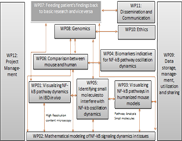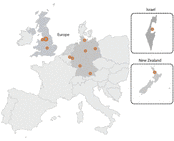
Dr. Irit Shoval

Dr. Einat Nissim-Eliraz
Institute Presentation
The complex interactions between pathogens and body systems cannot be completely mimicked in vitro and therefore studying the pathogenesis of infectious diseases has relied extensively on the use of rodents and other animal models. Unfortunately, findings in these animal models cannot be extrapolated to the target species, humans. Our research team has successfully set up a highly challenging model of human intestinal graft in mice. Using this model we are studying human Crohn's disease (CD), a disease of unknown cause, and human-specific enteropathogenic E. coli (EPEC & EHEC).
Mycobacterium avium paratuberculosis (MAP), a bacterium which is commonly present in domestic animals and our food chain was previously found in the gut and blood of CD patients, but causality is difficult to establish. MAP is the etiological agent of a severe gastroenteritis in ruminants, known as Johnes disease (JD). The reminiscence of CD to paratuberculosis (JD) in ruminants led researcher for decades to point to the possible association of the causative organism of Johnes disease with Crohns disease. Isolation of MAP from the breast milk, blood and intestinal tissue of Crohns disease patients (as well as healthy individuals) has led to concern that it does play a role in the pathogenesis of the disease. However, the MAP etiology of Crohns disease is highly controversial and Kochs postulates cannot be fully satisfied without infection studies in the human gut of genetically susceptible individuals. Using mice engrafted with human gut we have showed for the first time that this bacterium invades the human gut epithelium inducing severe tissue damage and inflammation reminiscent of CD. These observations implicate a role for this bacterium in CD and offer a mouse model that will enable to analyze its virulence mechanisms in the human gut.
EHEC is an emerging pathogen, causing outbreaks of food-borne gastroenteritis, manifested by bloody diarrhea, which may progress to the potentially fatal hemolytic uremic syndrome (HUS). Using the humanized mouse model enabled us to study virulence mechanisms of EHEC in the human and bovine gut. Infecting the bovine and human intestinal xenografts with EHEC, the pathogen maintains specific tropism to the colon and elicits the characteristic attaching and effacing lesions and pathological changes which are dependent on the expression of its type 3 secretion system (T3SS). Using this animal model system we are currently trying to understand the molecular basis of for this tissue tropism, an understanding that will undoubtedly help to develop novel therapeutics and vaccines.





